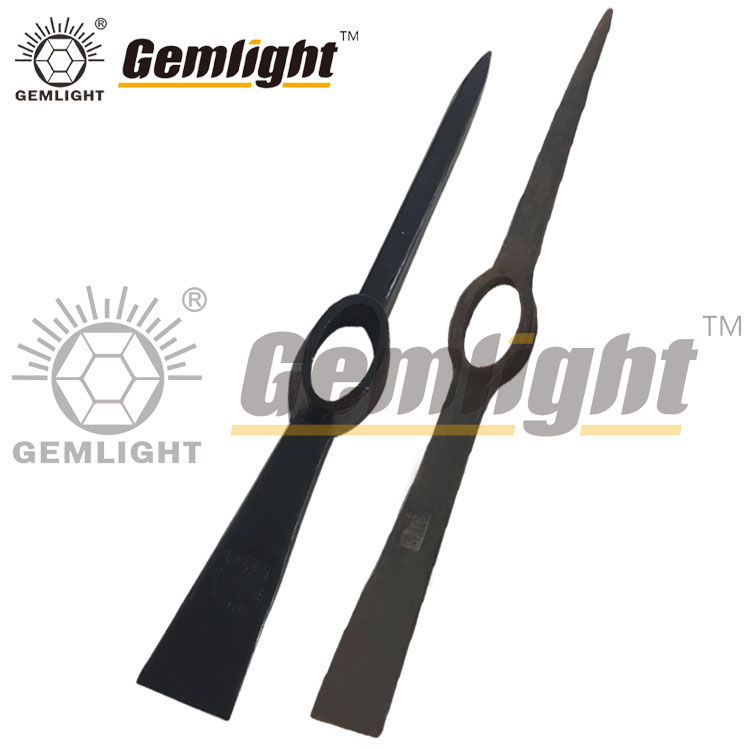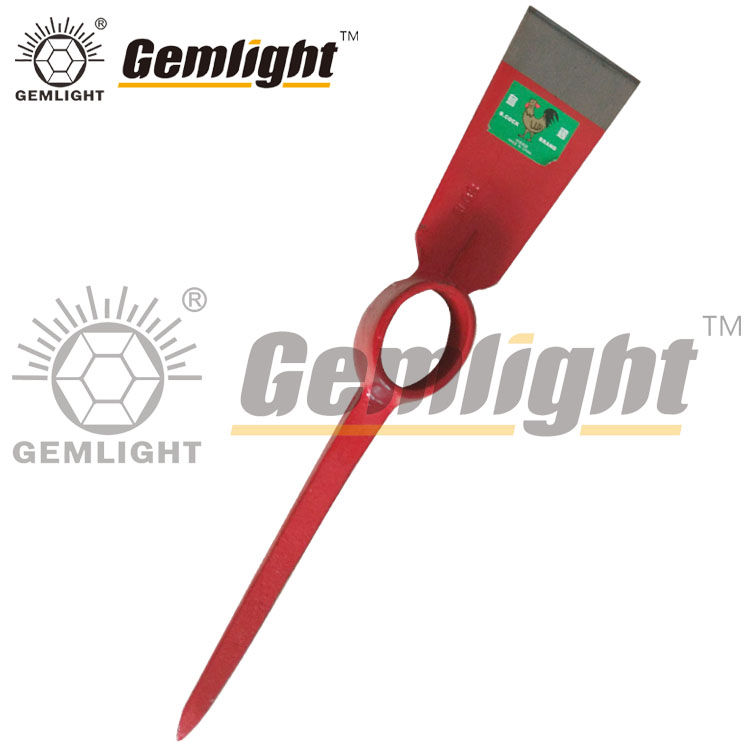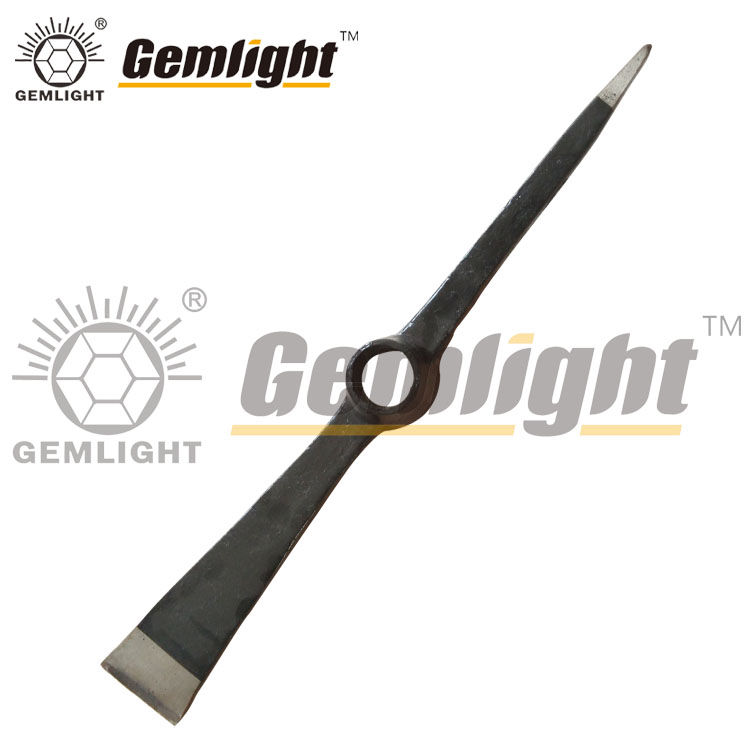News
In the diverse agricultural landscapes of Africa, ranging from arid regions in the Sahel to fertile valleys in East Africa, the demand for dependable hand tools remains strong. Among these tools, pickaxes play a crucial role in land cultivation, irrigation trenching, weed control, and crop bed preparation. To meet the needs of rural farmers and commercial growers, understanding the core types of pickaxes is fundamental.
The pointed pickaxe, featuring a sharp, tapered head on one side and a flat blade on the other, is widely used for breaking up compacted soil or rocky ground. Its effectiveness lies in its ability to penetrate deep, dry, and sun-baked earth. For areas with heavy clay or roots, the chisel pickaxe, with a broader, flat-edged blade, is better suited to slicing through soil layers while loosening surface debris.
Another common design is the combination pickaxe, which combines the pointed and chisel heads into one practical tool. This dual-purpose pickaxe is particularly valued in resource-limited settings where carrying multiple tools is not feasible. It allows users to adapt quickly to varied terrain.
Farmers in countries like Uganda, Ethiopia, and Ghana often rely on these essential pickaxe types during both the planting and harvesting seasons. Unlike powered equipment, pickaxes are cost-effective, require no fuel, and are easy to maintain—a major advantage in regions with limited infrastructure.
For distributors and agricultural supply businesses targeting African rural markets, offering a well-curated range of basic pickaxe types—alongside clear usage guides—can significantly improve product accessibility and end-user satisfaction.

Beyond agriculture, pickaxes remain indispensable tools in Africa’s fast-growing construction and mining industries. With the continent’s rapid urbanization, infrastructure development, and mineral extraction projects, there is a rising demand for specialized pickaxe types designed for heavy-duty tasks.
In mining regions such as South Africa, Zambia, and the Democratic Republic of Congo, mining pickaxes are used for tasks like ore loosening, coal breaking, and tunnel clearing. These pickaxes often feature reinforced steel heads and ergonomic handles to endure high-impact force over prolonged use. In artisanal mining operations, especially where mechanized tools are unavailable or unaffordable, manually operated pickaxes remain the primary tools for excavation.
In urban construction zones across Nigeria and Kenya, laborers and site workers utilize chisel-type pickaxes for roadwork, concrete removal, and foundation preparation. The flat, blade-like side is ideal for controlled demolition, while the pointed side can break through compact gravel and old cement layers.
Modern pickaxe designs now often include tempered steel heads treated for increased hardness, as well as shock-absorbing handles pickaxe made from fiberglass or composite materials. These innovations help reduce fatigue and injuries for workers in demanding environments.
Contractors and equipment suppliers should also consider importing or manufacturing region-specific pickaxe types, adapted for local soil conditions and jobsite hazards. Furthermore, providing reinforced handle options is important in areas where high humidity or tool mishandling may compromise durability.
As Africa’s construction and mining sectors continue to expand, companies that offer robust, reliable pickaxe tools—suitable for long-term field use—are likely to gain a competitive edge in industrial supply markets.

Selecting the correct types of pick axe requires an understanding of the task at hand, environmental conditions, and the user's physical comfort. In many African regions, where manual labor remains the dominant mode of work, making the right tool choice significantly affects productivity and safety.
The first consideration is the type of soil or surface to be worked. For rocky terrain, such as in parts of Kenya's Rift Valley or northern Nigeria, a pointed pickaxe with a hardened steel tip is essential for penetration and leverage. For more loamy or sandy soil, a flat-blade pickaxe provides better scooping and cutting efficiency.
Next, the frequency and intensity of use must be factored in. For daily field use, such as in sugarcane farming or irrigation trenching, users benefit from lightweight pickaxes with balanced weight distribution. Long-handled models reduce strain on the back and arms during extended work periods.
The handle material is another critical component. In coastal or humid zones like Tanzania and Mozambique, wooden handles may be susceptible to swelling or decay. Here, fiberglass or composite handles provide better longevity and resistance to the elements. Conversely, wood handles remain popular in inland dry zones for their affordability and grip comfort.
Safety is also an important aspect. Distributors should offer well-balanced pickaxe company with secure head-to-handle fastening systems to prevent detachment during use. Gloves and user training guides can further improve end-user safety and satisfaction.
When offering products in African markets, it is helpful to align types of pickaxes with regional farming or industry practices. For instance, marketing a reinforced chisel pickaxe as ideal for cassava uprooting or rural path maintenance can make the product more relatable and relevant to local users.

As a manufacturer with decades of experience in agricultural and construction hand tools, our factory offers a tailored selection of types of pick axe designed specifically for African environments. We focus on durability, usability, and cost-efficiency to meet the challenges of hard labor conditions across the continent.
Our top-recommended models include:
Heavy-Duty Combination Pickaxe – Featuring a forged high-carbon steel head with a pointed tip on one side and a chisel edge on the other. Ideal for mixed soil and field trenching. Offered with hardwood or fiberglass handles, it balances strength with comfort.
Tempered Steel Mining Pickaxe – Built for rock-heavy zones and mining applications. Comes with extra-thick head structure, anti-rust coating, and anti-vibration handle—popular among customers in Congo and Zambia.
Compact Garden Pickaxe – Lightweight yet robust, suited for horticulture and small plot farming. The shorter handle allows precise control, particularly in cassava and yam cultivation.
Construction Site Pickaxe – Reinforced flat-blade model used for demolition, concrete cracking, and road maintenance. Widely adopted in public infrastructure projects in West Africa.
We offer OEM and ODM services, allowing clients to customize blade size, handle length, branding, and packaging. Our production lines are equipped for bulk orders, with quality control systems ensuring consistent output. Additionally, we support mixed container shipping to facilitate diverse order combinations.
From Nigeria to Ethiopia, many of our African clients value our commitment to rugged, reliable tools at factory-direct pricing. We welcome tool importers, distributors, NGOs, and government procurement agents to explore partnership opportunities. By choosing our factory's pickaxe types, you're choosing proven performance for the African workforce.

 Sitemap
Sitemap